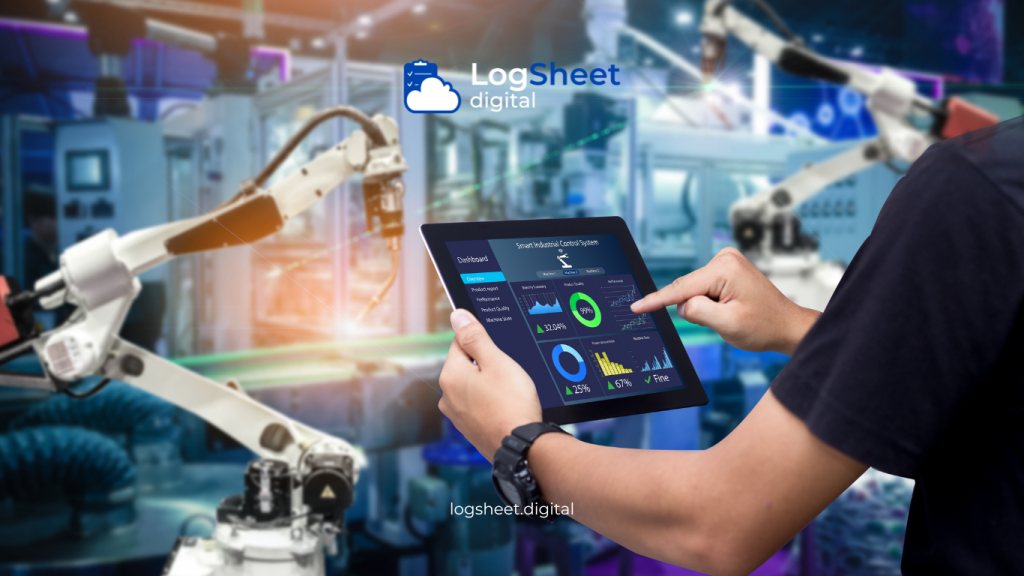Digital transformation in asset management is significantly enhanced by the use of digital logsheets. With technological advancements, asset management now relies on digital tools to improve efficiency, accuracy, and transparency. One key innovation in this transformation is the digital logsheet. In this article, we will explore how digital transformation affects asset management, the role of digital logsheets in this industry, and the benefits and challenges they present.
What is Digital Transformation?

Read more: Increasing Asset Management Efficiency with Digital Logsheets
Digital transformation refers to integrating digital technology into all business areas to enhance performance and provide additional value to customers. In asset management, digital transformation includes using software, transparency, apps, and digital tools to manage, monitor, and analyze assets more effectively.
Traditional vs. Digital Asset Management

Read more: Advantages of Digital Logsheets for Asset Maintenance Management
Traditional Asset Management
Traditional asset management often involves manual recording, data management using spreadsheets, and physical documentation. These methods are time-consuming and prone to human error. Additionally, data access may be limited and involve complex processes for analysis and reporting.
Digital Asset Management
With digital transformation, asset management can be done more efficiently and effectively. The use of asset management software, cloud-based apps, and automation systems enables real-time data collection, better asset tracking, and in-depth analysis. Digital logsheets play a crucial role in this process.
What is a Digital Logsheet?

Read more: Digital Logsheet Innovations for Asset Monitoring and Management
A digital logsheet is an electronic version of manual log records used to document information related to assets. Digital logsheets are typically in the form of apps or software that allow users to input, store, and manage asset data digitally. These tools often come with features like real-time tracking, automatic notifications, and in-depth data analysis.
The Role of Digital Transformation Asset Management Digital Logsheet

Read more: Implementation of Digital Logsheets for Asset Inventory and Condition
1. Enhancing Accuracy and Efficiency
Digital logsheets eliminate the need for manual recording and physical data processing. This reduces the risk of human error and allows for real-time data updates. By automating recording and reporting, digital logsheets speed up asset management processes and improve data accuracy.
2. Increasing Transparency and Accessibility
With digital logsheets, asset data can be accessed online from various devices and locations. This allows asset management teams to get up-to-date and accurate information anytime, anywhere. Transparency increases as all changes and data updates become recorded and traceable.
3. Facilitating Tracking and Monitoring
Digital logsheets facilitate real-time asset tracking. With GPS and sensor-based monitoring features, companies can accurately track the location and status of their assets. This helps in preventive maintenance and identifying issues before they become major problems.
4. Improved Data Analysis
Digital logsheets often come with analytics tools that allow users to process asset data and generate useful reports. This analysis can aid in strategic decision-making, budgeting, and risk management.
5. Enhanced Compliance and Security
With digital logsheets, asset records can be securely stored in the cloud and accessed only by authorized users. This enhances compliance with regulations and industry standards while ensuring asset data is protected from loss or damage.
Benefits of Digital Transformation Asset Management Digital Logsheet in Industry

Read more: Digitizing Retail Asset Records with Digital Logsheets
1. Cost Savings Digital Transformation Asset Management Digital Logsheet
Using digital logsheets reduces the need for paper and manual processes, leading to significant cost savings. Additionally, more efficient asset management can reduce maintenance and replacement costs.
2. Increased Productivity Digital Transformation Asset Management Digital Logsheet
By automating recording and reporting processes, digital logsheets allow asset management teams to focus on more strategic tasks. This enhances productivity and operational efficiency.
3. Better Decision-Making
Access to accurate and real-time data improves decision-making. Asset managers can make informed choices based on up-to-date information, leading to better planning and management.
4. Scalability
Digital logsheets can easily adapt to growing asset management needs. Whether managing a small number of assets or thousands, digital tools can scale to meet demands.
Challenges in ImplementingDigital Transformation in Asset Management with Digital Logsheets

Read more: Using Digital Logsheets to Improve Asset Management Team Performance
1. Initial Setup Costs
Implementing digital logsheets requires initial investment in software, hardware, and training. These costs can be a barrier for some organizations, especially smaller ones.
2. Training and Adaptation
Organizations need to train employees to use new digital tools effectively. The adaptation process may take time and could face resistance from those accustomed to traditional methods. The adaptation process can take time and may encounter resistance from those accustomed to traditional methods.
3. Data Security Concerns
Storing asset data electronically requires robust security measures to prevent data breaches. Organizations must protect their digital logsheets from cyber threats.
4. Integration with Existing Systems
Integrating digital logsheets with existing asset management systems can be challenging. Organizations need to ensure compatibility and smooth data transfer between systems.
Conclusion
Digital transformation is reshaping asset management, and digital logsheets are at the forefront of this change. They offer numerous benefits, including increased efficiency, transparency, and data accuracy. However, challenges such as initial costs, training needs, and data security must be addressed. Embracing digital logsheets can lead to significant improvements in asset management practices, making them a valuable tool for modern organizations.






leave your comments